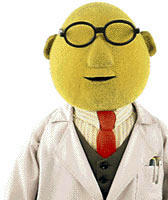
So, I spend two hours every Monday morning and Thursday evening on the road between the M-R-D Metropolitan area and Cathedral City. I happen to like the trip but it cuts into my day and driving with tourists on the road drives me nuts.

I also happen to love Cathedral City where I grew up and went to University. The place just can't have a bad picture taken of it even with a cellphone camera in bad light. On the other hand the city has no reason to exist other than that it is a provincial capital and has a university. It means that it is a largely white collar city where no one really works for a living.
 Now, the reason why I am doing this is to get some publishable research done. That means that I have to get something done that a) no one has thought of before b) if they did think of it they failed and c) succeed. Which requires creative thinking, discipline, keen observation and old-fashioned luck.
Now, the reason why I am doing this is to get some publishable research done. That means that I have to get something done that a) no one has thought of before b) if they did think of it they failed and c) succeed. Which requires creative thinking, discipline, keen observation and old-fashioned luck.This summer my focus has been on the physical chemistry problem of what happens when a well known industrial reducing agent [which everyone uses in huge excess because it is a) typically impure b) short lived in solution and c) has the solubility of beach sand (are you still with me on this sentence, we had a digression there that was almost humanities style writing in length, I am going to have to fix that before I try to write a scientific paper ... Subject -Verb - Object, keep it simple and stay away from weird tenses ... anyhoo back to our regularly scheduled sentence)] becomes a soluble species. In my hands, it has pulled a Luther on me. When Luther was in the tight grip of the Catholic Church they were able to minimize his eccentricities. However, when he was "free" of the confines of the church he went mad (so to speak) and started chewing the furniture (check out R. C. Sproul and "The Madness of Luther"). That is what happened to my compound when I was able to get it to dissolve ... it started chewing one whatever was around (solvent, container and spectrometers).
The problem is that I need pure compounds to characterize and with this material I am already starting at 85% purity on the best commercial samples. So my only hope is the formation of crystals that I can separate from the impurities and chewed on bits of furniture.
I thought I had the problem licked when massive well formed crystals formed from one of my oils. For a week I gloried in my crystals, there they were so close, just on the other side of the glass, so close. But I needed to isolate them and that meant work-up. Then things did not go so well, the crystals survived filtration and back distillation of the solvent but the real test is when you evacuate the reaction chamber to remove the solvent so you can handle the sample in the drybox. In less than a minute, while I watched, the massive crystals lost all structural integrity and became something that looked like Playdough if Campbell Soups made a tomato soup play dough.
What I have done once I can do again. But this time the path will be much longer and technically difficult to avoid the decomposition of the solvated crystals. I still do not know why some German or Russian did not do this chemistry 50 years ago and so in my spare time I am scouring the old literature for secondary research stories to make sure that I am not re-inventing the wheel. But that is research.
It is good to be back at the bench. The glassblowing is coming back to me and I like the people I am working with. I feel blessed and I will feel even more blessed when in two weeks the science courses will be taught at ABU without my name listed as professor. Then I will know what a sabbatical feels like.


No comments:
Post a Comment